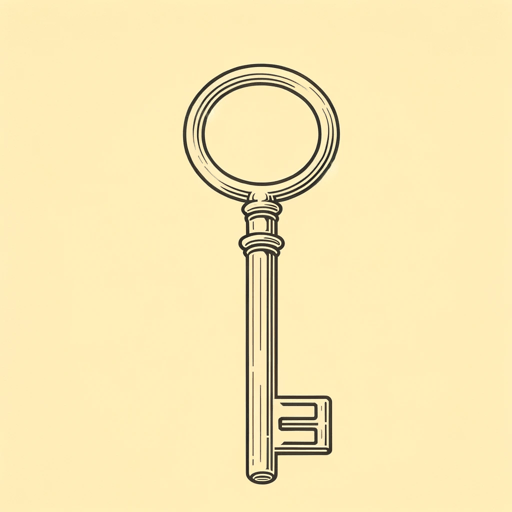54 pages • 1 hour read
Jack FinneyContents of the Dead Man's Pocket
Fiction | Short Story | Adult | Published in 1956A modern alternative to SparkNotes and CliffsNotes, SuperSummary offers high-quality Study Guides with detailed chapter summaries and analysis of major themes, characters, and more. For select classroom titles, we also provide Teaching Guides with discussion and quiz questions to prompt student engagement.
Summary and Study Guide
Summary: “Contents of the Dead Man’s Pocket”
“Contents of the Dead Man’s Pocket,” a short story by American author Jack Finney, was first published in Collier’s magazine in October 1956. The story subsequently was published in literature anthologies, including the one referenced in this study guide: the Heritage edition of Adventures in Appreciation, published by Harcourt Brace Jovanovich in 1980.
As a novelist and short story writer, Finney is noted for his artistry in creating suspense and heightening tension until the plot resolves. “Contents of the Dead Man’s Pocket” illustrates his skill in this regard while also examining human nature and developing universal themes regarding personal values, professional ambition, and relationships. Set in 1950s New York City, the story relates a terrifying incident experienced by protagonist Tom Benecke, an ambitious young man intent on climbing to the top of his company’s corporate ladder. Suspense drives the narrative, leading to an ironic conclusion.
The story begins on an autumn evening in the Lexington Avenue apartment Tom shares with his wife, Clare. Tom sits at his desk in the living room, about to type an office memo regarding a marketing project he has worked on for weeks, hoping to impress his boss; his copious notes are scribbled on a yellow sheet of paper next to his typewriter. Clare is getting dressed to go to the movies alone. Tom would like to go with her, but he feels compelled to finish the memo. The room feels warm. He struggles to open the window next to his desk; with great effort, he manages to raise it a few inches. He lights a cigarette and lays it in an ashtray on the desk.
Clare leaves. Tom’s closing the door behind her creates a draft between the door and the open window. The yellow paper with all his notes sails out the window, landing on a ledge three feet below the window and 11 stories above Lexington Avenue. Forcing the window wide open, Tom watches as the paper moves along the ledge until it stops in a corner created by the adjoining apartment’s projecting exterior wall and ledge, five yards away.
Tom curses at the thought of abandoning the paper, recalling the “countless hours of work” it represents (22). He rationalizes losing it, but driven by ambition to advance in his company, he knows he must retrieve it. He puts on a jacket and climbs onto the ledge, his face pressed against the building. Half-inch indentations between the bricks give him a handhold.
Fear stirs in Tom, but he doesn’t allow himself to think or look down as he moves crablike toward the corner. With his left foot on his ledge and his right foot on the ledge of the adjoining apartment, he bends down to pick up the paper. Looking between his legs, he sees Lexington Avenue 11 stories below. Fear overwhelms him. Trembling violently, he jerks upright, pressing his body into the corner and shuddering uncontrollably. He takes deep breaths to avoid fainting. He screams for help, but no one hears him. In his mind, Tom visualizes losing his balance and falling “with a terrible speed” through the air (25).
Tom forces himself to move back along the ledge toward his apartment window. Finding the yellow paper in one hand, he places it between his teeth and keeps moving, suppressing his feelings of horror by not thinking. When he reaches his open window, he grips the top of the casement with his fingertips; under his weight, the window slams shut, sending him to his knees on the ledge. Seeing his reflection in the glass, Tom removes the yellow paper from his mouth and shoves it into his jacket pocket. Looking through the window, he sees the cigarette he left in the ashtray and is amazed to note it is still burning. Very little time has passed.
Unable to open the window, Tom strikes it with the heel of one hand. The blow is ineffective, and the rebound of his hand hitting the glass threatens his balance. He strikes the window with a half-dollar and then with one of his shoes, to no avail. He visualizes Clare coming home from the movies and seeing him on the other side of the window, but he knows he can’t crouch on the ledge for hours until she returns. Reaching into a pocket, Tom pulls out a book of matches and three old letters. One after another, he sets them on fire, hoping to attract attention before the flames reach his hand and he must let go. He then finds coins in his pocket and drops them to the street below. No one notices him.
Trembling with fear and exhaustion, Tom checks his jacket pockets again, but “there was nothing left but the yellow sheet” (29). Looking at it, filled with his “incomprehensible” notes, he realizes that when he falls to the street below, there will be no way to identify his body. He thinks about his “fierce ambition” (29) and regrets spending countless hours working when he could have been with Clare.
Tom decides to make a last attempt to save his life by breaking the window with his fist. If the glass breaks, he will live; if it does not, he will be flung off the ledge. Saying Clare’s name, he drives his fist through the glass and falls forward as it shatters. Safe inside, he places the yellow sheet of paper back on his desk and goes to find Clare. As he opens the front door, a draft sends the paper through the broken window. Watching it disappear, Tom laughs and leaves the apartment to meet his wife at the movies.


